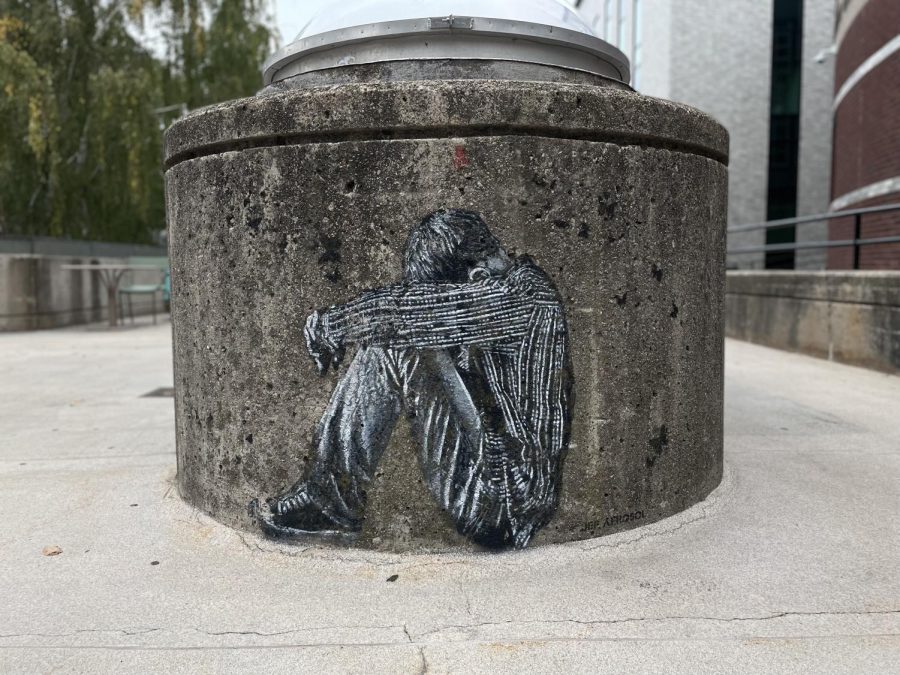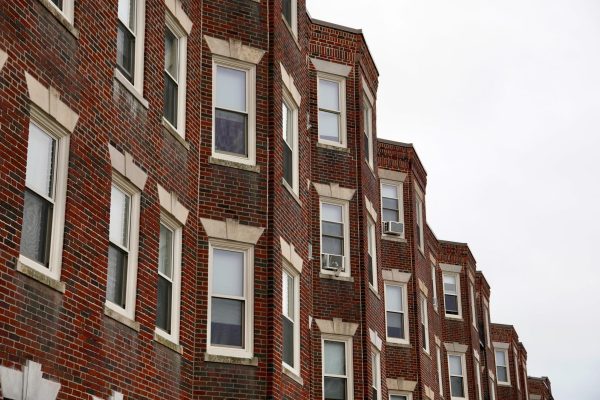Mental health apps: Are they providing college students with adequate care?
Since the pandemic, many colleges have signed on to the telemedicine trend, often offering students free subscriptions to mental help apps such as Headspace. Are these apps living up to the hype?
Photo: Melissa Rejuan
Mural outside Cargill Hall at Northeastern University.
When Lisbeth Martinez, a second-year student at Northeastern University, struggled to find a therapist in Boston, she turned to mental health apps as an alternative, but found that they didn’t do enough to make her feel well.
“I’ve used LifeHealth and other apps from here at Northeastern,” said Martinez, an international business and international affairs major. “I don’t think they’ve helped at all.”
The pandemic forced adaptations in many areas of health care, including mental health. One was telemedicine, which was a game changer for many who suddenly could be anywhere to access their caregivers rather than tied to a specific office on a regular basis. The other was in the form of mental health apps, a digital revolution in mental health wellness that some companies promised would revolutionize access to care and health.
Many signed onto the idea, including Northeastern University, where students were even offered free subscriptions to mental help apps such as Headspace. But mental health apps are simply not enough for many college students. While taking on intensive academic stress and pressure, in addition to personal struggles, students are expected to navigate mental barriers with limited resources. One example of where students have turned in the absence of adequate mental health care is clubs and organizations geared toward support, though that is not enough either, they say.
Abby MacPherson, a fourth-year behavioral neuroscience major and member of student-run club Suicide and Mental Illness Education, or SMILE, hopes the university can improve on providing students with more access to therapists. At SMILE, members meet every week and cover a new mental health diagnosis, as well as discuss how they are feeling and how they could support one another.
Based on discussions with peers, MacPherson feels “UHCS [Northeastern University Health and Counseling Services] could do a better job of having accessible counselors. Most college students, not just those in the club, would probably agree with that.”
Martinez, for example, is still in search of an in-person therapist in Boston. But for the time being, she resorts to apps.
“They are not an alternative to therapy,” she said. “With all the money we pay Northeastern, it’s surprising they don’t have enough therapists.”
Northeastern Psychology Professor Hilmar von Strünck agreed that there are components of in-person therapy mental help apps simply cannot replace.
“How do you walk into the treatment center or treatment office? How do you walk out? How do you sit in your seat when you are talking? Those are all different things psychologists may observe and use as help, or can use as help, to give somebody better support in helping them get better,” said von Strünck. “That is certainly lost if it’s done online or via an app.”
While mental health apps cannot universally suit people’s needs and replace an in-person experience with a licensed therapist, they may be the only option for some individuals as there is a severe lack of access to therapists, and it can take weeks to book an appointment.
Limited access to in-person therapy is a global issue. The pandemic caused a surge of stress, anxiety and depression without enough therapists to combat it and as a result, the world has been experiencing a severe mental health crisis.
Von Strünck said, “Due to the pandemic we just had, many more people were seeking help for depression and anxiety issues,” von Strünck. “And so the system, just like the healthcare system overall, is sometimes overrun. …You can’t just find enough people that could fill these spots.”
Mental health apps, such as Headspace and Calm, perform better for short-term benefits or as an emergency resource during a time of distress, where an individual cannot access a therapist in the moment. They often offer meditation services and exercises designed for daily use based on research and therapy practices rather than formal treatment, like videos and breathing techniques, and few allow communication with an actual therapist through text message. “I think to a point they’re helpful, but they don’t give you the most accurate advice or accurate steps to follow just because you’re not talking to an actual person,” said Aarya Patel, a second-year health science student at Northeastern and former user of UCLA Mindful, another mental health app. “You can’t really cater it to your specific needs and expectations. But it is still a good starting out resource.”
Although immediate access to mental health care may provide some relief, there is no solidified evidence to prove whether mental health apps improve people’s mental health. According to a recent study published in January, which involved a team of researchers from the University of Michigan conducting 145 randomized controlled trials of mobile app mental health interventions with 47,940 participants, the benefits of mental health apps are still unclear – as only a miniscule percentage of their findings showed that those tools helped the test subjects with stress or anxiety.
It is also important to address the potential risk of mental health apps, which are often driven by financial incentives, possibly affecting the quality of the app. Just like with traditional in-person therapy, the guarantee of quality service can be uncertain when there is a profit incentive involved.
Like in any economy, app developers must compete. Their intention is to establish mental health apps as a universal utility, but considering there is a financial incentive for their creators, users should remember to use vigilance when browsing mental health apps.
“You definitely want to make sure that you are looking for an app that has legitimacy to it, and not just a bogus app some Joe Smoe put up trying to trick people into using a fake app and making money off of them,” said von Strünck. “A red flag may already be when people are asked to pay upfront and the app does not want to go through the insurance company directly,”
Von Strünck added that the effectiveness of mental health apps is dependent on a variety of factors: “It’s one of those questions in psychology we can never say a definite answer to, yes or no.”






